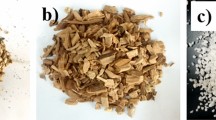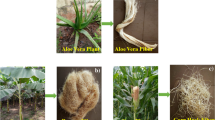Abstract
In order to enhance the performance of waste crumb rubber modified asphalt binder and expand its engineering application, this study applied three methods to activate waste crumb rubber, containing diesel pre-swelling, microwave radiation, and composite activation. Activated waste crumb rubber modified asphalt binder samples under 4 diesel pre-swelling content and 6 microwave radiation intensities were prepared, respectively. Fourier Transform Infrared Spectrometer, Thermogravimetric test, and Dynamic Mechanical Analysis were used to characterize the influence of activation on the functional groups, crosslinking, and viscoelasticity of crumb rubber. Viscosity was employed to illustrate the engineering performance of modified asphalt binder, while the phase angle and complex modulus in the Dynamic Shear Rheological test were recorded to identify rheological properties. The distribution of rubber and the interaction between rubber and asphalt binder were observed by Gel Permeation Chromatography, electron microscope, and Scanning Electron Microscope tests. Results demonstrated that diesel pre-swelling was beneficial to the synthesis of C=C, microwave radiation and composite activation broke the main chain and crosslinking bonds of rubber. As for modified binders, three activation treatments decreased the viscosity and extended the linear viscoelastic domain. The control of microwave radiation equivalent intensity and diesel content had an important signification on alleviating the damage to the ability of deformation resistance. In addition, Diesel pre-swelling supplemented the light components in the asphalt binder and helped to reduce the size of rubber particles combined with the secondary swelling. Microwave radiation was related to the pyrolysis of rubber particles. Furthermore, the rubber core phenomenon disappeared basically under 1.8 kJ/g composite activation and the rubber was distributed in the modified asphalt binder system evenly.















Similar content being viewed by others
References
Zhang X, Saha P, Cao L, Li H, Kim J (2018) Devulcanization of waste rubber powder using thiobisphenols as novel reclaiming agent. Waste Manage 78:980–991. https://doi.org/10.1016/j.wasman.2018.07.016
Pacheco-Torgal F, Ding Y, Jalali S (2021) Properties and durability of concrete containing polymeric wastes (tire rubber and polyethylene terephthalate bottles): an overview. Constr Build Mater 30:714–724. https://doi.org/10.1016/j.conbuildmat.2011.11.047
Cheng L, Yu J, Zhao Q, Wu J, Zhang L (2020) Chemical, rheological and aging characteristic properties of Xinjiang rock asphalt binder-modified bitumen. Constr Build Mater 240:117908. https://doi.org/10.1016/j.conbuildmat.2019.117908
Rodriguez-Fernandez I, Baheri FT, Cavalli MC, Poulikakos LD, Bueno M (2020) Microstructure analysis and mechanical performance of crumb rubber modified asphalt binder concrete using the dry process. Constr Build Mater 259:119662. https://doi.org/10.1016/j.conbuildmat.2020.119662
Singh D, Das AK, Habal A, Bhonsle S (2021) Effectiveness of hydrated lime filler on fracture and cracking properties of polymer and crumb rubber-modified asphalt binder mastics. Adv Civ Eng Mater 10:107–121. https://doi.org/10.1520/ACEM20200051
Xu O, Xiao F, Han S, Amirkhanian SN, Wang Z (2016) High temperature rheological properties of crumb rubber modified asphalt binder binders with various modifiers. Constr Build Mater 112:49–58. https://doi.org/10.1016/j.conbuildmat.2016.02.069
Wang T, Xiao F, Amirkhanian S, Huang W, Zheng M (2017) A review on low temperature performances of rubberized asphalt binder materials. Constr Build Mater 145:483–505. https://doi.org/10.1016/j.conbuildmat.2017.04.031
Hu K, Yu C, Chen Y, Li W, Wang D, Zhang W (2021) Multiscale mechanisms of asphalt binder performance enhancement by crumbed waste tire rubber: insight from molecular dynamics simulation. J Mol Model 27:1–14. https://doi.org/10.1007/s00894-021-04786-1
Ding Z, Li P, Zhang J, Bing H, Yue X (2020) Analysis of viscosity test conditions for crumb-rubber-modified asphalt binder. Constr Build Mater 245:118454. https://doi.org/10.1016/j.conbuildmat.2020.118454
Ameli A, Babagoli R, Asadi S, Norouzi N (2021) Investigation of the performance properties of asphalt binder binders and mixtures modified by Crumb Rubber and Gilsonite. Constr Build Mater 279:122424. https://doi.org/10.1016/j.conbuildmat.2021.122424
Yu X, Leng Z, Wei T (2014) Investigation of the rheological modification mechanism of warm-mix additives on crumb-rubber-modified asphalt binder. J Mater Civ Eng 26:312–319. https://doi.org/10.1061/(ASCE)MT.1943-5533.0000808
Wang Q, Chen Z, Lin K, Wang C (2018) Estimation and analysis of energy conservation and emissions reduction effects of warm-mix crumb rubber-modified asphalt binders during construction period. Sustainability 10:4521. https://doi.org/10.3390/su10124521
Zheng S, Lu X, Zhao J, He R, Chen H, Geng Y (2022) Influence of industrial by-product sulfur powder on properties of cement-based composites for sustainable infrastructures. Constr Build Mater 367:130171. https://doi.org/10.1016/j.conbuildmat.2022.130171
Mu Y, Ma F, Dai J, Li C, Fu Z, Yang T, Jia M (2020) Investigation on high temperature rheological behaviors and fatigue performance of trans-polyoctenamer-activated crumb rubber modified asphalt binder binder. Coatings 10:771. https://doi.org/10.3390/coatings10080771
Howard IL, Baumgardner GL, Jordan WS, Hemsley JM, Hopkins C (2021) Comparing ground tire rubber, styrene-butadyene-styrene, and GTR-SBS hybrids as asphalt binder binder modifiers. J Mater Civ Eng 33:04021091. https://doi.org/10.1061/(ASCE)MT.1943-5533.0003709
Li G, Wang F, Kuang M, Zhou X (2016) Performance of SBS/crumb rubber composite modified asphalt binder. J East China Univ Sci Technol 1:21–27. https://doi.org/10.4028/www.scientific.net/AMR.450-451.417
Sun Q, Tong L, Xiao F, Zhu X, Sun G (2017) Formulation and aging resistance of modified bio-asphalt binder containing high percentage of waste cooking oil residues. J Clean Prod 161:1203–1241. https://doi.org/10.1016/j.jclepro.2017.06.155
Sun Y, Wang W, Chen J (2019) Investigating impacts of warm-mix asphalt binder technologies and high reclaimed asphalt binder pavement binder content on rutting and fatigue performance of asphalt binder binder through MSCR and LAS tests. J Clean Prod 219:879–893. https://doi.org/10.1016/j.jclepro.2019.02.131
Niu D, Xie X, Zhang Z, Niu Y, Yang Z (2021) Influence of binary waste mixtures on road performance of asphalt binder and asphalt binder mixture. J Clean Prod 298:126842. https://doi.org/10.1016/j.jclepro.2021.126842
Ma J, Hu M, Sun D, Lu T, Sun G, Ling S, Xu L (2021) Understanding the role of waste cooking oil residue during the preparation of rubber asphalt binder. Resour Conserv Recyc 167:105235. https://doi.org/10.1016/j.resconrec.2020.105235
Dong R, Zhao M (2018) Research on the pyrolysis process of crumb tire rubber in waste cooking oil. Renew Energy 125:557–567. https://doi.org/10.1016/j.renene.2018.02.133
Shatanawi KM, Biro S, Geiger A et al (2012) Effects of furfural activated crumb rubber on the properties of rubberized asphalt. Constr Build Mater 28(1):96–103. https://doi.org/10.1016/j.conbuildmat.2011.08.041
Kedarisetty S, Biligiri KP, Sousa JB (2016) Advanced rheological characterization of reacted and activated rubber (RAR) modified asphalt binders. Constr Build Mater 122:12–22. https://doi.org/10.1016/j.conbuildmat.2016.06.043
Isied M, Souliman MI (2021) Neural network modeling for the rotational viscosity of reacted and activated rubber-modified binders. Adv Civ Eng Mater 10(1):140–153. https://doi.org/10.1520/ACEM20200114
Li J, Xiao F, Amirkhanian SN (2020) Rheological and chemical characterization of plasma-treated rubberized asphalt binder using customized extraction method. Fuel 264:116819. https://doi.org/10.1016/j.fuel.2019.116819
Yin L, Yang X, Shen A, Wu H, Lyu Z, Li B (2021) Mechanical properties and reaction mechanism of microwave-activated crumb rubber-modified asphalt binder before and after thermal aging. Constr Build Mater 267:120773. https://doi.org/10.1016/j.conbuildmat.2020.120773
Xu O, Li M, Hou D, Tian Y, Wang Z, Wang X (2020) Engineering and rheological properties of asphalt binder binders modified with microwave preprocessed GTR. Constr Build Mater 256:119440. https://doi.org/10.1016/j.conbuildmat.2020.119440
Hosseinnezhad S, Kabir SF, Oldham D et al (2019) Surface functionalization of rubber particles to reduce phase separation in rubberized asphalt for sustainable construction. J Clean Prod 225:82–89. https://doi.org/10.1016/j.jclepro.2019.03.219
Lushinga N, Dong Z, Cao L (2022) Evaluating the high-temperature properties and reaction mechanism of terminal blend rubber/nano silica composite modified asphalt using activated rubber. Nanomaterials 12(24):4388. https://doi.org/10.3390/nano12244388
Xu O, Li M, Han S, Zhu Y, Zhang J (2021) Effect of diesel and microwave on the properties of crumb rubber and its modified binders. Constr Build Mater 271:12158. https://doi.org/10.1016/j.conbuildmat.2020.121580
Sun L, Wen Y, Liu Q et al (2021) A laboratory investigation into the effect of waste non-tire rubber particles on the performance properties of terminal blend rubberized asphalt binder binders. Constr Build Mater 313:125409. https://doi.org/10.1016/j.conbuildmat.2021.125409
Tan Z, Wang J (2020) Research of the rheological modification mechanism of crumb rubber-modified asphalt binder containing polyamide 6 additive. Adv Civ Eng. https://doi.org/10.1155/2020/8877487
Qian C, Fan W, Ren F, Lv X, Xing B (2019) Influence of polyphosphoric acid (PPA) on properties of crumb rubber (CR) modified asphalt binder. Constr Build Mater 227:117094. https://doi.org/10.1016/j.conbuildmat.2019.117094
Cui Y, Xing Y, Wang L, Zhang S (2014) Improvement mechanism of crumb rubber-modified asphalt binder. J Build Mater 14(5):634–638
Zhang F, Hu C (2015) The research for structural characteristics and modification mechanism of crumb rubber compound modified asphalt binders. Constr Build Mater 76:330–342. https://doi.org/10.1016/j.conbuildmat.2014.12.013
Xiao P, Zheng J, Kang A, Sun L, Wang Y (2017) Aging characteristics of rubber modified asphalt binders in different environmental factors combinations. Appl Sci 7(8):806. https://doi.org/10.3390/app7080806
Mahlin D, Wood J, Hawkins N, Mahey J, Royall P (2008) A novel powder sample holder for the determination of glass transition temperatures by DMA. Int J Pharm 371:120–125. https://doi.org/10.1016/j.ijpharm.2008.12.039
Rasool R, Song P, Wang S (2018) Thermal analysis on the interactions among asphalt binder modified with SBS and different degraded tire rubber. Constr Build Mater 182:134–143. https://doi.org/10.1016/j.conbuildmat.2018.06.104
Cong P, Xun P, Xing M, Chen S (2013) Investigation of asphalt binder binder containing various crumb rubbers and asphalt binders. Constr Build Mater 40:632–641. https://doi.org/10.1016/j.conbuildmat.2012.11.063
Ma J, Sun G, Sun D et al (2020) Rubber asphalt binder modified with waste cooking oil residue: optimized preparation, rheological property, storage stability and aging characteristic. Constr Build Mater 258:120372. https://doi.org/10.1016/j.conbuildmat.2020.120372
Wang H, Liu X, Apostolidis P, van de Ven M, Erkens S, Skarpas A (2020) Effect of laboratory aging on chemistry and rheology of crumb rubber modified bitumen. Mater Struct 53(2):1–15. https://doi.org/10.1617/s11527-020-1451-9
Wang F, Kuang M, Zhou X, Li C (2014) Influence of microwave on interaction between crumb rubber and asphalt binder. Pet Process Petrochem 45(12):11
Liu W, Xu Y, Wang H et al (2021) Enhanced storage stability and rheological properties of asphalt binder modified by activated waste rubber powder. Materials 14(10):2693. https://doi.org/10.3390/ma14102693
Bahia HU, Zhai H, Zeng M et al (2001) Development of binder specification parameters based on characterization of damage behavior (with discussion). J Assoc Asphalt Paving Technol 70:442–470
Acknowledgements
This study was supported by Postgraduate Research & Practice Innovation Program of Jiangsu Province [No. SJCX21_0069].
Author information
Authors and Affiliations
Contributions
ML: Conceptualization, Methodology, Writing. OX: Methodology. ZM: Project administration. QW: Resources.
Corresponding author
Ethics declarations
Conflict of interest
The authors declare that they have no known competing financial interests or personal relationships that could have appeared to influence the work reported in this paper.
Additional information
Publisher's Note
Springer Nature remains neutral with regard to jurisdictional claims in published maps and institutional affiliations.
Supplementary Information
Below is the link to the electronic supplementary material.
Rights and permissions
Springer Nature or its licensor (e.g. a society or other partner) holds exclusive rights to this article under a publishing agreement with the author(s) or other rightsholder(s); author self-archiving of the accepted manuscript version of this article is solely governed by the terms of such publishing agreement and applicable law.
About this article
Cite this article
Li, M., Xu, O., Min, Z. et al. Engineering performance and activation mechanism of asphalt binder modified by microwave and diesel pre-processed waste crumb rubber. Mater Struct 56, 117 (2023). https://doi.org/10.1617/s11527-023-02204-x
Received:
Accepted:
Published:
DOI: https://doi.org/10.1617/s11527-023-02204-x




